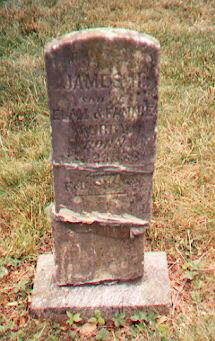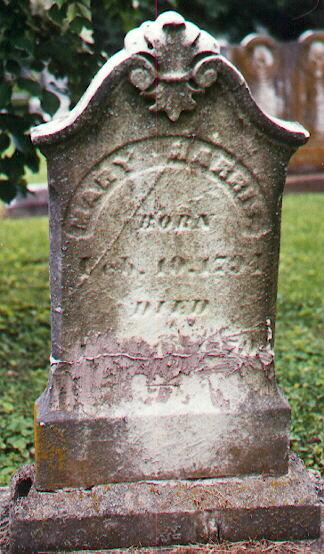
What’s
the difference between “restoration” and “preservation”?
You may occasionally find a firm advertising that it will
"restore" cemetery markers. What, exactly, does this mean -- and what are they
likely to do to your stone?
By definition, "restoration" means making the stone like new.
Such an approach ignores the history and patina of the stone and attempts --
using techniques that are often inappropriate and damaging to the long-term
preservation of the monument -- to make it look like it did the day it was
placed in the cemetery. Restoration firms will often be happy to take on any
project. The only critical consideration in restoration is what can be charged
the client.
Preservation (or conservation), on the other hand, attempts to
keep a stone from deteriorating further, stabilizing it, and ensuring that it is
there for future generations. No conservator will claim to be able to work on
every type of material or every monument. There are also some critical
considerations in competent preservation or conservation work:
- Preservation must ensure careful planning
- Expedient or easy solutions often compound the problem
- Actions should be the least intrusive
- Treatments should respect the original fabric
- Actions should be, where possible, reversible
- All work must be carefully documented in case future work
becomes necessary
Perhaps the most important distinction between a restoration
firm and a conservator is that the conservator will be a member of the
American Institute for Conservation of
Historic and Artistic Works and will subscribe to their code of ethics and
standards of practice. The conservator will provide you with a treatment
proposal, explaining exactly what will be done and how; afterwards you will get
a treatment report that specifies in even greater detail what was done and what
materials were used.
I see
all sorts of information on the Web about how I can glue monuments together
myself – What’s wrong with that?
You can probably find information on how to remove your
child's appendix, but are you willing to try and risk their life? It is no
different with a 100-year old stone that can't be replaced. Are you willing to
try, only to make matters worse? Here are some photographs of failed attempts to
save a few dollars.
 This
is a shameful way to treat a monument. Inappropriate adhesives have been used
without taking care to either achieve a good, tight alignment of the stone
fragments or clean up the excess material. In addition, the continuous joints
will create new failure lines. This
is a shameful way to treat a monument. Inappropriate adhesives have been used
without taking care to either achieve a good, tight alignment of the stone
fragments or clean up the excess material. In addition, the continuous joints
will create new failure lines.
 This
stone could have been easily repaired by a conservator, but a "do-it-yourselfer"
smeared a thick epoxy paste all over the stone in an effort to "glue" it
together. The effort has disfigured the stone and has created a repair that,
when it fails, will cause even more harm to the stone than the original break.
 An
effort was made to repair this stone using a liquid epoxy which has run down
over the stone and yellowed with exposure to ultraviolet light. Like the example
above, this stone will soon fail, causing additional damage.
We live in a "do-it-yourself" world, but we must also realize
that there are some things we just can't do ourselves -- some things take
special training, experience, skills, tools, and materials. These photos provide
clear examples of the damage that can be done by "do-it-yourselfers." Stones
that are beautiful and that have lasted decades can be ruined in only minutes by
well-meaning, but poorly skilled and ill-prepared "do-it-yourselfers."
Does this mean that there
is nothing I can do to help preserve my family’s monuments?
NO! What it means is that some jobs require professionals. There are still
lots of things you can do to ensure your family cemetery is appropriately cared
for.
For example, is it carefully and respectfully maintained? Is the grass
mowed in a way that protects the monuments and prevents damage? Is debris
removed from the cemetery? Are trees trimmed and maintained to ensure that they
don't damage stones? Is the cemetery protected from vandals? If the cemetery is
owned by someone else, have you spoken to them and worked out an arrangement to
allow descendents to periodically visit and maintain the cemetery? Have you and
your family members raised the money to fence the cemetery, clearly marking its
location? Is the cemetery recorded at your local county clerk of court? Have you
recorded and photographed all of the markers in the cemetery?
We also have pages on our web site that explain
cleaning stones and
resetting tilted or some
broken markers.
This link will take you to an article (in .pdf) that will help you secure
your
cemetery gates
against theft.
Simple Tips
We were asked to develop a simple 1 or 2 page handout that
dealt with good -- and bad -- repair choices. So we devised 9 More Tips for
Cemetery Preservation, after the original 9 tips provided by our friends at
NCPTT (http://ncptt.nps.gov/2007/stopping-the-hands-of-time-9-tips-for-cemetery-preservation/).
While theirs focuses on issues like planning, community involvement, and
documentation, Chicora's addresses repair materials and techniques. It is
available
here.
|